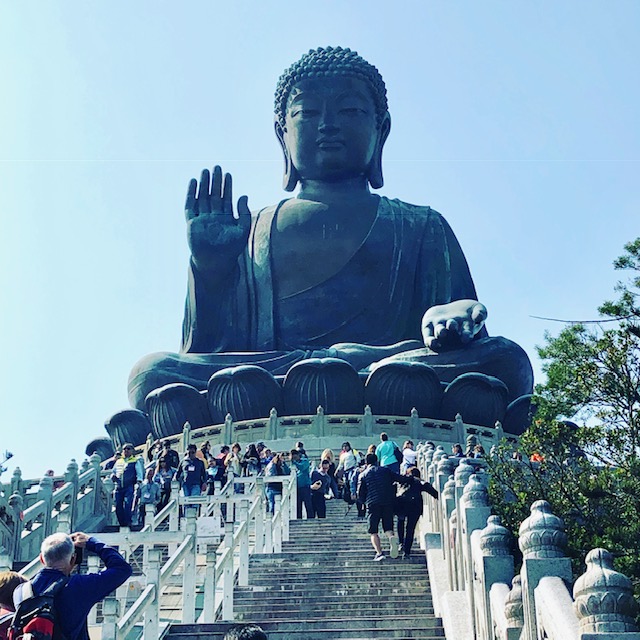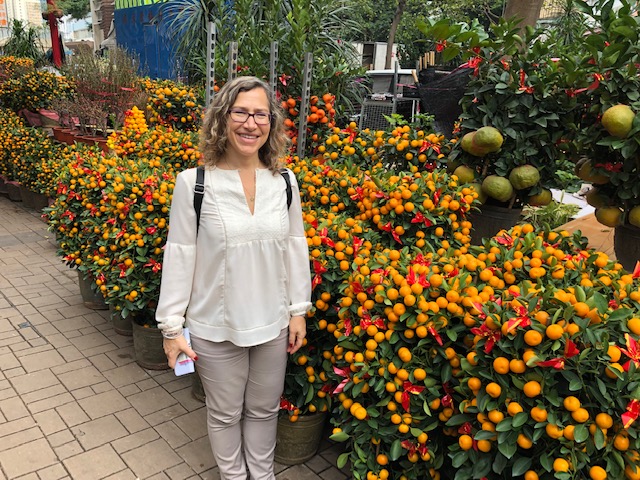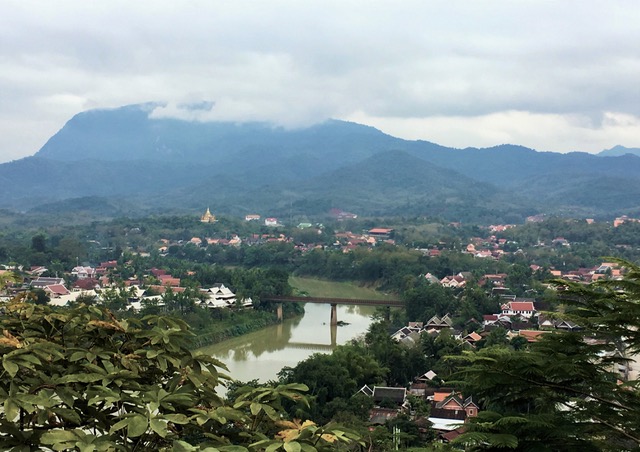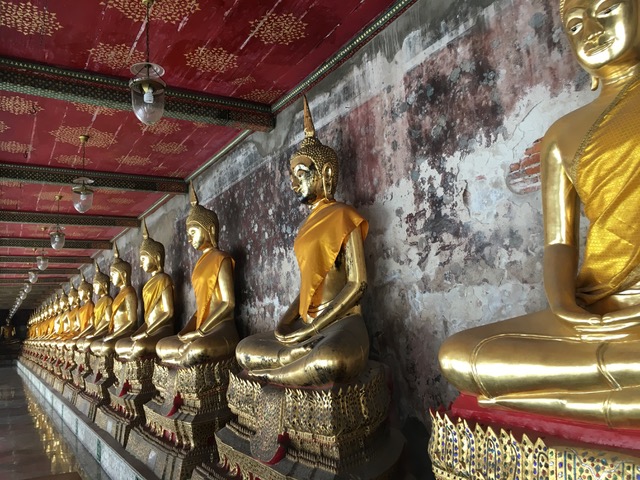 Guest Post and Photo by Amy Perry Basseches
Guest Post and Photo by Amy Perry Basseches
Midway into our journey from Chiang Rai to Chiang Mai (a 4-5 hour drive), we stopped for a breather at the humorously named
Cabbages and Condoms, which is, unbeknownst to me, a thriving chain of inns and restaurants in Thailand and the UK — where all profits support the The Population & Community Development Association (PDA) and its programs in primary health, education, HIV/AIDS, family planning, rural development, and the environment. The restaurant started as a small vegetable stand on PDA office premises where the vegetables, along with condoms and oral contraceptives, were sold to the local residents. Of course, I bought a T shirt. It’s a good cause, and good for a chuckle back home.
Other highlights of my trip to Chiang Mai:
I love learning new things, and "Monk Chat" at Wat Suandok was right up my alley, arranged by my guide Oy. I spoke directly to Phra KK, a monk for the past 18 years (since he was 13). Rather than being hokey or awkward, it was genuine and open. Phra KK explained that Monk Chat is a way for monks to give correct information on Thai Buddhism, which was much appreciated. He explained that Buddhism is not a religion per se, but a way of living and of understanding life; there are 227 precepts by which to do so. It is not a centralized belief system based on a god or set of gods. I asked, so, you could be another religion and also a Buddhist? And he said, "Like a Jew Bu? Sure!" He also explained when it is acceptable to break one of the precepts, and what followed was a great digression into when monks take "Western" antibiotics. Ask me sometime.
Again, with Oy at my side, I set out for an Anthony Bourdain-styled breakfast at the Chiang Mai Gate Market early one morning. Over the course of 2 hours, I ate and ate and ate! Bamboo stuffed with coconut and peanut sticky rice. Sticky rice with tea leaf. Rice noodles, broth, pork, and tomatoes. Water buffalo rind. BBQ pork stick. Banana leaf with coconut cream sticky rice and banana. Sticky rice with catfish. Sticky rice with fried garlic, sugar, and dried fish. Sticky rice with sesame and salt. And, at the end, Thai coffee (made with condensed milk). I didn’t eat the ant egg delicacies (too expensive!), or the grilled frog, but my taste buds and appetite for exploring and eating were sated.
Also great in Chiang Mai:
- Really inexpensive foot massage at Anusarn Night Market.
- Fun hike among huge Ficus Altissma trees in Doi Suthep-Pui National Park.
- Blessing by a monk at Wat Prathat Doi Suthep.
- Shopping for packaged food — including fried worm snacks, with Oy to help me shift through options, at Warorot Market, and tasting Lao Khao (moonshine rice whisky).
- Giving food to the novice monks near Wat Phrathat Doi Suthep.
- The Jewish neighborhood, inhabited by around 400-500 ex-pats (mostly from the US, Canada, and Israel). A restaurant gathering spot is Sababa.
- Cooking dinner with the Raunkaew-Yanon family, who has lived in their spot for approx. 150 years; they now have 36000 sq meters (almost 9 acres), scattered with homes and gardens.
 On our last day in Hong Kong, we went on a group hike on the Dragon’s Back Trail with expats from Switzerland, France, and London now living in Hong Kong. It’s a glorious trail atop a mountainous ridge with vistas of the ocean, beaches, and seaside villages below. We went with a French guide from Wild Hong Kong, who has lived all over the world, but now resides with his wife in Hong Kong. He told us that on our next visit we have to bike in the New Territories, where the landscape is stunning, traffic is less, and the biking wonderful.
On our last day in Hong Kong, we went on a group hike on the Dragon’s Back Trail with expats from Switzerland, France, and London now living in Hong Kong. It’s a glorious trail atop a mountainous ridge with vistas of the ocean, beaches, and seaside villages below. We went with a French guide from Wild Hong Kong, who has lived all over the world, but now resides with his wife in Hong Kong. He told us that on our next visit we have to bike in the New Territories, where the landscape is stunning, traffic is less, and the biking wonderful. 

 It’s hard to grasp the immensity of
It’s hard to grasp the immensity of 
 Our concierge at
Our concierge at 
 We arrived into Hong Kong at sunrise Sunday morning after a 15½-hour direct flight from Boston on
We arrived into Hong Kong at sunrise Sunday morning after a 15½-hour direct flight from Boston on  Guest Post and Photo by Amy Perry Basseches
Guest Post and Photo by Amy Perry Basseches  Guest Post and Photo by Amy Perry Basseches
Guest Post and Photo by Amy Perry Basseches Guest Post and Photo by Amy Perry Basseches
Guest Post and Photo by Amy Perry Basseches  Guest Post and Photo by Dana Volman
Guest Post and Photo by Dana Volman We took two tours with
We took two tours with  Of all the stops on our 18-day visit to Italy, Lecce was the most surprising. I really didn’t have any expectations beyond Lecce being the starting point of our 6-day bike ride through
Of all the stops on our 18-day visit to Italy, Lecce was the most surprising. I really didn’t have any expectations beyond Lecce being the starting point of our 6-day bike ride through